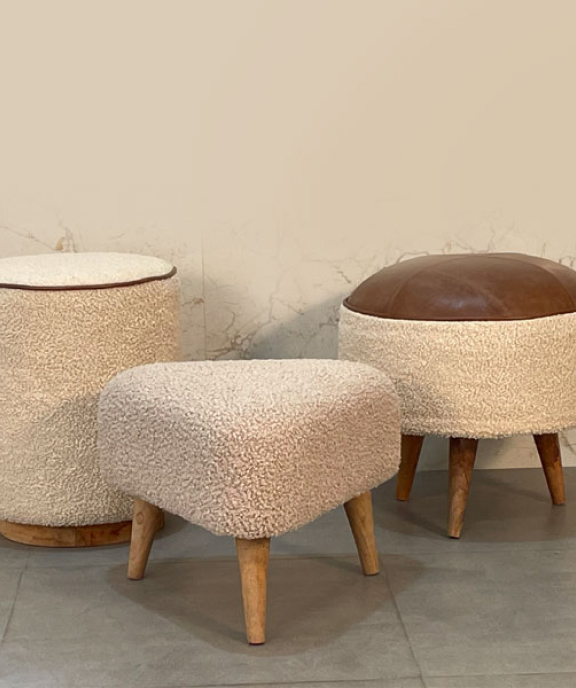Rattan furniture has seen a surge in popularity in recent years. Sourced from climbing palms, rattan offers a natural aesthetic that complements both indoor and outdoor environments. This guide explores key considerations for selecting the perfect rattan furniture pieces for your home.
Types of Rattan: Natural vs. Synthetic
Rattan furniture comes in two main varieties: natural rattan and synthetic rattan (polyethylene).
-
Natural rattan: This strong and eco-friendly material is sourced from climbing palms. It offers natural variations in color, but can be susceptible to moisture damage.
-
Synthetic rattan (polyethylene): A weather-resistant and affordable alternative, synthetic rattan is available in a wider range of colors. However, quality can vary, so careful selection is advised.
Choosing the Right Rattan Furniture: Space and Functionality
Selecting the perfect rattan furniture requires considering two key factors: space and functionality.
-
Space: Before purchasing, measure your designated area to ensure chosen furniture fits comfortably. Oversized pieces can overwhelm a room, while undersized furniture might appear awkward.
-
Functionality: Identify the primary use for the furniture. Dining sets with comfortable chairs and spacious tables suit entertaining, while lounging sets prioritize relaxation with plush cushions and reclining options.
Durability and Maintenance: Care Considerations
Natural rattan and synthetic rattan require different care approaches due to their material properties.
-
Natural rattan: More susceptible to moisture damage, natural rattan benefits from regular cleaning with a soft brush to remove dust and debris. Avoid excessive water exposure and store indoors when not in use.
-
Synthetic rattan (polyethylene): Generally easier to maintain, synthetic rattan can be cleaned with a simple wipe-down using mild soap and water. However, some lower-quality synthetic options may require harsher chemicals, so checking cleaning instructions is recommended.
Comfort Considerations: Cushions and Ergonomics
For optimal comfort in rattan furniture, consider both cushion design and ergonomic features.
-
Cushions: Material and thickness play a key role. Breathable fabrics like acrylic or weather-resistant outdoor fabrics ensure year-round comfort. Cushion thickness impacts support; thicker cushions provide better pressure relief for extended sitting.
-
Ergonomics: Chair back height and seat depth influence proper posture and back support. Choose chairs with a back that reaches your shoulder blades and a seat depth that allows your knees to bend at a 90-degree angle for optimal comfort.
Style and Design: Classic vs. Modern Rattan
Rattan furniture offers a variety of styles to suit different tastes.
-
Classic Rattan: This timeless design features natural textures and woven patterns. Classic rattan furniture complements various settings, from coastal living rooms to bohemian bedrooms.
-
Modern Rattan: Modern takes on rattan incorporate clean lines, geometric shapes, and mixed materials like metal or glass. These pieces offer a contemporary aesthetic for a sleek and stylish look.
Price Considerations: Balancing Cost and Quality
The price of rattan furniture varies depending on the material and craftsmanship.
-
Natural rattan: Generally more expensive due to the raw material and skilled handcrafting involved in its creation.
-
Synthetic rattan (polyethylene): A more affordable option, but quality can vary significantly. Carefully consider construction and material quality to avoid lower-quality pieces that may require earlier replacement.
Budget-friendly options: Consider sales and off-season discounts for both natural and synthetic rattan furniture. High-quality used furniture can also be a cost-effective way to acquire beautiful rattan pieces.
Sustainability: Natural vs. Synthetic Rattan
Sustainability is a growing concern for consumers. Here’s a breakdown of the environmental impact of each rattan type:
-
Natural rattan: Sourced from a renewable resource, natural rattan can be eco-friendly if harvested from sustainable plantations. However, unsustainable harvesting practices can harm ecosystems. Look for certifications like FSC (Forest Stewardship Council) to ensure responsible sourcing.
-
Synthetic rattan (polyethylene): Made from plastic, synthetic rattan production requires fossil fuels and can generate pollution. Disposal of synthetic rattan furniture can also be problematic, as it may not be biodegradable and end up in landfills.
Choosing sustainably sourced natural rattan or opting for high-quality synthetic rattan furniture built to last can minimize environmental impact.


